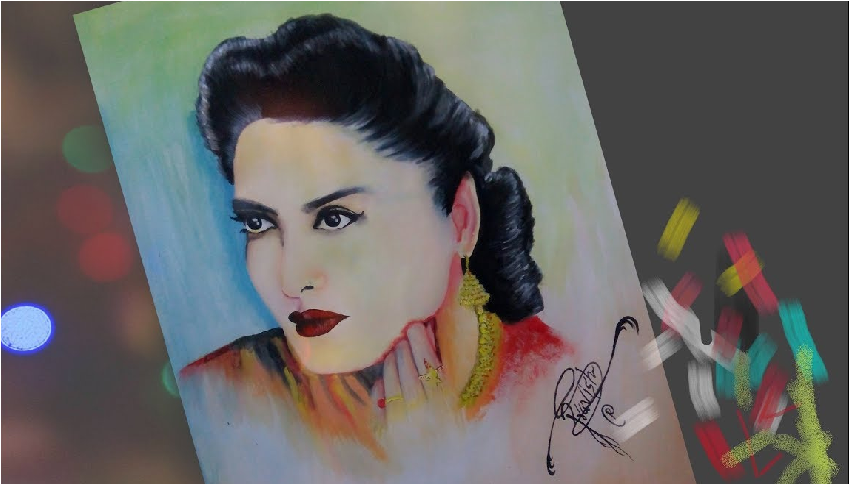I met a traveler from an antique land
Who said: Two vast and trunkless legs of stone
Stand in the desert …. Near them, on the sand,
Half sunk, a shattered visage lies, whose frown,
And wrinkled lip, and sneer of cold command,
Tell that its sculptor well those passions read
Which yet survive, stamped on these lifeless things,
The hand that mocked them, and the heart that fed:
And on the pedestal these words appear:
“My name is Ozymandias, King of Kings:
Look on my works, ye Mighty, and despair!”
Nothing beside remains. Round the decay
Of that colossal wreck, boundless and bare
The lone and level sands stretch far away
About Ozymandias
Ozymandias is actually Rameses II, 13th century B.C. Pharaoh of Egypt. He meant from Egypt. The speaker’s account of meeting a traveler from that land is merely fictional. It is only his way of getting to his subject matter or what he wants to say next about the shattered statue found in the middle of the desert.
How do we know that the statue is not complete? And what is the point behind the existence of the leftovers or remains of the statue?
Had the statue been found intact and complete, the point behind the poem would have been defeated. We only see the trunkless legs meaning the legs without the trunk or middle part of the body. Then the face “visage”, which is half sunk in the sand is shattered or broken. The speaker intends to show us an image of a broken and damaged statue. Which is lying among the sands of an endless desert because this particular image reinforces the message behind the poem, which is the utter futility of all earthly power and search after glory. It should not, therefore, escape our attention that Ozymandias becomes a metaphor for the ephemeral nature of political power.
Egyptian Desert
The choice of the Egyptian desert is appropriate and the setting, therefore, reinforces the poem’s message and the speaker’s reflections on the significance of the fragments. Or, broken pieces of the statue of the once great king. Of course, in the desert, there are no signs of life, and all we see there is the endless stretch of sand. The statue is therefore deliberately placed amid a scene of utter decay and destruction. Where there is not the slightest hope for a sign of life. Had it placed amid a scene of fertility and vegetation, the message behind the poem would have been missed because the speaker wants to show that there is no sign at all of the glory and splendor of the ancient king and that all earthly things are subject to decay and change.
Sense of Ruin and Decay
Nothing beside remains is a very effective sentence that draws attention to the sheer absence of signs of life around the broken statue. “Colossal wreck” (line13), in fact, colossal reminds us of ‘vast’ (line 2) or large and huge in size, which is a fitting description of Egyptian statues. ‘Wreck’ and ‘decay’ are negative words associated with destruction, ruin, and fragmentation. Finally, the last line (14) is effective because it reinforces the total absence of any signs of life in the desert scene where one sees nothing but sand dunes and heaps stretching endlessly for miles and miles.
Contrasts of Ancient King
When Ozymandias was alive, he was so proud of himself and his achievements. The line written on the pedestal (base) of the statue is indicative of his arrogance and conceitedness. First of all, he thinks of himself as the ‘king of kings’, almost like a God who has no equal. But when we look at his works or achievements and what his statue has been reduced to in the middle of the desert now, we are deeply aware of the huge gulf between what he possessed and stood for once in the past and his utter powerlessness and lack of authority now.
This contrast helps send the poem’s message that Ozymandias’s works have crumbled and disappeared and his civilization is gone forever. In fact, all that past glory has been turned to dust by the indiscriminate, relentless, and destructive power of history. So the ruined statue is merely a monument and a powerful statement about the insignificance of human endeavor and pursuit of glory in the face of a relentless time.
Sculptor of Ozymandias’s statue
The speaker sends the message that he was so skillful because he managed to maintain the facial expression and the passions that can still be seen ‘on those lifeless things, i.e., the statue, which is an inanimate object. Doing that, i.e., ‘maintaining the passions’ requires great skill and knowledge of the personality of the living king. The fact that the sculptor kept the frown and wrinkled lip, which is expressive of royal contempt, meant that he made a true image of the once great king who oppressed his own people and issued orders (commands) to his followers to kill so many of his subjects in cold blood. So he was insensitive and utterly ruthless. In fact, line 8 describes the nature of his relationship to his own people, where there were only objects of mockery and humiliation for him.




